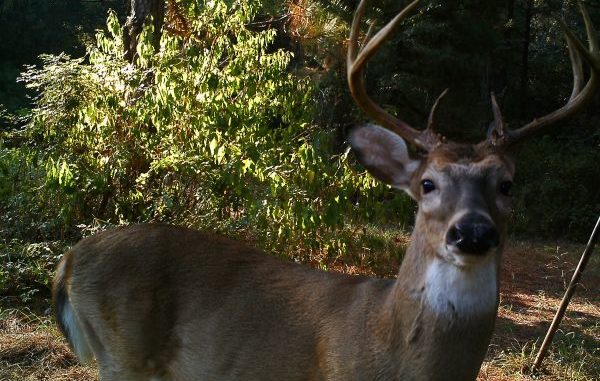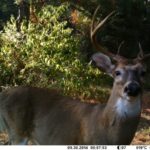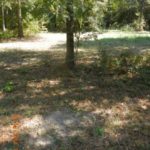
Weather is the key to filling one’s deer tags
September seemed to be as hot as August was; the weatherman kept talking about the unseasonably warm weather, with temperatures in the 90s when the heat index was considered.
The first two weeks of October gave us more of the same. The weatherman even used the term “oppressive” when talking about the heat.
However, a nice cold front moved in during the middle of the month, bringing some nice, cool days for the opening of the Area 2 Primitive Season.
It was hard to imagine anyone wanting to go bowhunting on Oct. 1.
Will Primos in an article in North American Whitetail talked about hunters being so anxious to hit the woods they will often hunt under less favorable conditions, which makes for poor hunting and poor success. No doubt, hunting in Louisiana in our Gulf Coast environment is as hard as it gets.
On warm days, wind currents vary so much that it makes it just about impossible to have the proper setup.
Louisiana can often have mild winter weather, and this will make for slow deer movement. When temperatures rise above 70 degrees, deer activity will drop considerably.
So hunting the cold fronts is the key to success in the Bayou State. Hunting good weather conditions during the rut makes for an enjoyable outing in the deer woods — and often equates to meat in the freezer.
November is the prime month for Area 2 hunters. The rut is on, and deer hunting is generally good if Mother Nature blesses us with cooler temperatures.
I was in Desoto Parish when the Area 2 primitive weapons season opened. I found fresh scrapes all over the place. Rubs were also abundant.
Several of the scrapes had wet spots where deer had urinated in the scrape. These were serious scrapes, which no doubt meant the rut is underway.
I had predicted in the Louisiana Sportsman Annual Rut Report that scraping would begin around Oct. 23, so I was in the ballpark with my guesstimate.
In any event, breeding activity should have been in full swing for the early gun season in November. If you hunt in Area 2, hopefully you have been using some tags and putting venison in the freezer.
The best is yet to come for Areas 1, 4 and 6 hunters, so if you hunt these areas you might want to be checking for scrape activity in middle November.
The Area 2 rut is always a month ahead of Area 4 and generally two months ahead of Areas 1 and 6. The middle of December would be the start time for scraping in Areas 1 and 6.
Did you see that LDWF has their deer breeding map on their website?
Scott Durham and his crew of biologists have worked hard over the past few years gathering breeding information and mapping it across the state. This is the latest and greatest breeding data for the state, and I am sure you would benefit from it.
I made one trip to Pearl River Wildlife Management Area in October. It was opening day, and the wind was strong and squirrel activity was poor.
I saw two and killed two squirrels. I was not impressed by the mast crop, but the area I usually traverse was hit really hard by Katrina and the oak trees suffered heavy damage.
I did see lots of hog sign, and the deer browsing was such that I will be back for the deer season.
It appears to me that the environmental conditions are changing on this area due to the hurricane damage. The swamp black gum trees appear to be dying out, and the oak ridges seem to be subsiding. Of course, tallow trees are everywhere.
We might see an increase in open swamp in some of these areas where the oak component has been removed.
The mast crop appears to be fair around the state, and this will impact your deer hunting. If you hunt mainly feeders and food plots, the deer might stay on the acorns rather than visiting the locations you have prepared for them.
If this happens, it would be wise to move to the oak bottoms and ridges where the food is. Sometimes setting up in the woods on trails that lead to the food plots and feeders can increase your sightings, as well.
The key is to be mobile when your deer sightings begin to decline and hunt those areas that deer are frequenting. Many hunters actually believe feeders reduce their sightings because deer do not have to move much to find food; they simply come out at night when you are not there, feed and then go lay up.
When deer have to hunt for the food, they are more mobile and the odds of seeing deer actually increase.
One thing that has declined around Camp David is the hog activity. I am not sure if this is because hog numbers are down in my area or because the wet summer kept the rooters in the river drain, or perhaps we have just hunted them so much they are avoiding our property.
We do have a couple of coyote pups hanging around the big food plot, and hopefully once the gun season opens we will be able to remove them from the landscape. No doubt they are keeping the deer and hogs on the alert mode.
Food plots on the property are growing well. I basically planted at the start of October after a good rain, and then I got some showers on the new growth once it was up.
I planted wheat oaks, crimson clover, ladino clover, arrowleaf clover, chickory and winter peas. I left strips of joint vetch that was still growing and producing seed, along with strips of purple hull peas. I will let the peas stand and hopefully produce seed for the wildlife.
The young oaks that I planted grew quiet well during the spring and summer months. Because of the warm and wet conditions in September, I noticed 6 to 10 inches of new growth on some of the young trees.
If you are planning on doing some tree planting, now is the time to order your trees. The trees need to be in the ground in January or February, prior to spring.
If my chestnut trees do not produce fruit next year, I will be disappointed. The deer pear trees that I planted six years ago started producing fruit this year. Many of the water and willow oak trees have acorns, and the pecan trees also produced fruit.
The key to having good wildlife is to have good habitat conditions, which include a diversity of mast and fruit producing trees. Having both white oak and red oak species will generally prevent a total mast crop failure.
During October, I did take time to look at the growth and development of the bass in some lakes in Desoto Parish. The action was impressive, and the bass were still jumping on the Ribbet Frog. I would have thought that a crankbait would have been the ticket but, while the crankbait did produce some fish, the action on the frog was incredible.
I released one 5-pounder that hopefully will continue to grow, and next spring I anticipate catching some bass in the 7- to 8-pound range on this lake.




